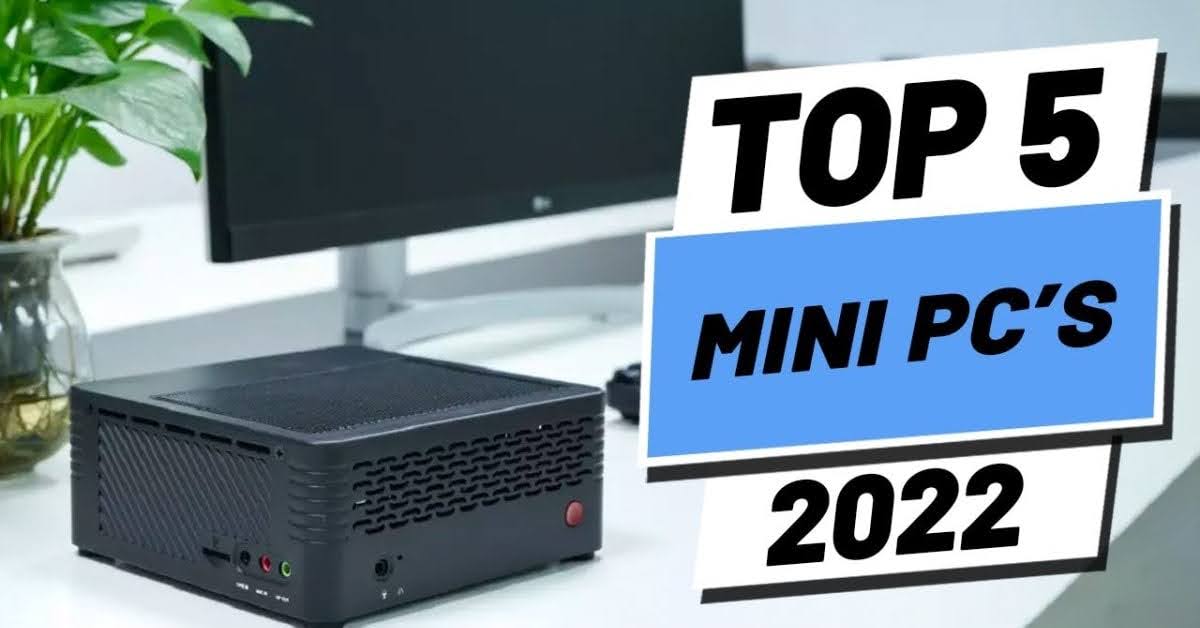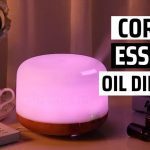A mini computer with a battery is a compact computing device that integrates a built-in rechargeable battery, allowing for increased portability and versatility. Unlike traditional desktop computers that require a constant external power source, these mini computers can operate independently from a power outlet for a certain duration, thanks to their onboard battery.
These mini computers are designed to provide similar functionality to larger desktop counterparts but in a smaller form factor, making them ideal for users who need computing power on the go or in areas where access to a power outlet is limited. They often feature a variety of hardware components such as processors (CPU), memory (RAM), storage (SSD or HDD), and connectivity options like Wi-Fi, Bluetooth, and multiple USB ports.
Example of a Mini Computer with a Battery
The HIGOLEPC Mini PC is a versatile and compact computing device designed for users seeking portability and functionality. With its 10.1-inch touchscreen display and built-in battery, this mini computer offers a convenient solution for various computing needs on the go.
Featuring the Windows 11 Pro operating system, the HIGOLEPC Mini PC provides users with a familiar and intuitive computing experience. Whether you’re browsing the web, checking emails, watching videos, or working on documents, this mini computer offers the power and flexibility of a full-fledged desktop PC in a portable package.
The touchscreen display adds an extra layer of interactivity, allowing users to navigate menus, launch applications, and interact with content using touch gestures. This feature is particularly useful for tasks that benefit from a hands-on approach, such as drawing, note-taking, or playing touchscreen-based games.
Equipped with a built-in battery, the HIGOLEPC Mini PC offers extended usage without the need for a constant power source. This makes it ideal for users who need to work or stay productive while on the move, whether it’s during travel, business trips, or outdoor activities.
Despite its compact size, the HIGOLEPC Mini PC doesn’t compromise on performance. Powered by an Intel processor and featuring ample storage and memory options, this mini computer delivers reliable performance for multitasking, productivity, and entertainment.
In terms of connectivity, the HIGOLEPC Mini PC offers a range of ports and interfaces, including USB, HDMI, headphone jack, and microSD card slot, allowing users to connect peripherals, external displays, and storage devices as needed.
Overall, the HIGOLEPC Mini PC is a versatile and portable computing solution that combines the convenience of a touchscreen display, the flexibility of Windows 11 Pro, and the freedom of a built-in battery, making it an ideal choice for users seeking a compact and capable desktop PC experience wherever they go.
Trending Today
Features to Consider when Buying a Mini Computer with Battery
Before purchasing a mini computer with a built-in battery, there are several key features and factors to consider to ensure that the device meets your specific needs and preferences. Here are some important features to consider:
- Battery Life: One of the most crucial factors to consider is the battery life of the mini computer. Evaluate the estimated battery runtime provided by the manufacturer and consider how long you typically need the device to operate on battery power before needing a recharge.
- Processing Power: Assess the processing power of the mini computer, including the type of processor (e.g., Intel Core, AMD Ryzen), CPU speed, and number of cores. Consider your intended usage scenarios and ensure that the processor is capable of handling your computing tasks efficiently.
- Operating System: Determine the operating system of the mini computer and ensure that it aligns with your preferences and compatibility requirements. Common operating systems for mini computers include Windows, macOS, and Linux distributions.
- Storage Capacity: Evaluate the onboard storage capacity of the mini computer, including options for solid-state drives (SSDs) or eMMC storage. Consider your storage needs for operating system files, applications, and data, and assess whether additional external storage options are necessary.
- Memory (RAM): Consider the amount of memory (RAM) available in the mini computer. Higher RAM capacity allows for smoother multitasking and better overall performance, especially when running multiple applications simultaneously or working with memory-intensive tasks.
- Display Size and Resolution: Assess the size and resolution of the display on the mini computer, especially if it features a built-in touchscreen. Consider your preferences for screen size and resolution based on your intended usage scenarios, such as productivity tasks, multimedia consumption, or entertainment.
- Connectivity Options: Evaluate the available connectivity options on the mini computer, including USB ports, HDMI ports, headphone jacks, and wireless connectivity (e.g., Wi-Fi, Bluetooth). Consider your needs for connecting peripherals, external displays, and other devices, and ensure that the mini computer offers sufficient connectivity options.
- Build Quality and Durability: Assess the build quality and durability of the mini computer, including the materials used in its construction and overall build design. Consider factors such as portability, ruggedness, and resistance to wear and tear, especially if you plan to use the device in outdoor or travel environments.
- Price and Value: Evaluate the price of the mini computer in relation to its features, specifications, and overall value proposition. Consider your budget and compare multiple options to find the best balance between price and features that meets your needs.
- Reviews and Customer Feedback: Research reviews and customer feedback for the mini computer from reputable sources and online retailers. Pay attention to user experiences, ratings, and recommendations to gain insights into the device’s performance, reliability, and user satisfaction.
By considering these key features and factors before buying a mini computer with a built-in battery, you can make an informed decision and choose a device that best fits your needs, preferences, and budget.


















